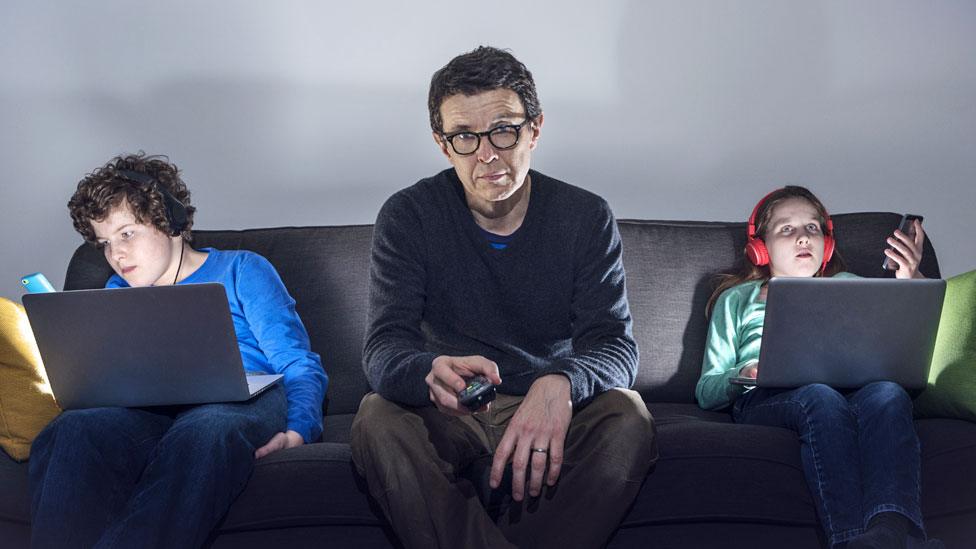The end of watching TV as a family
- Published

It would be hard to exaggerate the influence that television once held over family life.
Even if you hated programmes, you still watched them. It was always there in the background.
It was where people gathered, a shared experience in families and a shared experience across communities.
But that world is disappearing.
The annual Childwise report into how children consume media shows a tipping point away from watching programmes together.
For the first time, children aged five to 16 are more likely to watch programmes and videos on devices such as laptops and mobile phones, rather than on television screens.
This was only a decade ago, but this family viewing already looks like another era
It means that watching television within families is becoming a private activity, individual and solitary.
It's wearing headphones in the bedroom rather than sprawled together in front of the box.
It's Netflix on the mobile rather than a Sunday afternoon television movie. Βι¶ΉΤΌΕΔs are places where people are alone together.
"TV sets have been the focal point in a lot of homes for many years, but they are falling out of favour amongst children," said Childwise's research director, Simon Leggett.
Binge viewing
It's not that young people have stopped watching programmes and videos.
The monitoring survey shows viewing has slightly increased this year to an average of over two and a half hours per day.
But it's increasingly no longer in the public space of the living room and it's often about the repetitive "binge viewing" of favourite programmes.
Shared viewing and shared values: Lighting the advent calendar on Blue Peter in 1974
Researchers found that half of children and teenagers preferred watching back-to-back episodes, so that two and a half hours of viewing might be for a single programme.
The idea of waiting for a programme is disappearing. The idea of a TV channel with a fixed schedule seems as clunky as a VHS player. It's becoming less likely that families will meet round the television.
Such shared viewing is so last century.
None of this will seem particularly surprising to parents, who will have seen their children retreating into their own digital worlds.
But it does mean the shape of family life is changing.
Programmes you loved to hate
No longer will people argue over what to watch and then complain about their parents' choices.
And parents are increasingly unlikely to be able to supervise their children's viewing. It's now watch without mother.
Television was a single point in the family home. Family viewing in the 1950s.
Family television will no longer be like the old days of Top of the Pops, watching a load of dross for that one glimpse of a band you liked.
Teenagers in the 1970s, 1980s and 1990s were able to define themselves as much by what they despised on television as by what they liked. You have to have a common culture before you can kick against it.
It's also a shift that follows the trend towards polarisation and the echo chambers of social media.
You watch a great deal of something you know you like. You never watch things with which you're likely to disagree.
The feedback loops of online algorithms serve up even more of the same, dicing and slicing and targeting the audience into advertising-friendly chunks.
It's almost the complete opposite of Lord Reith's idea that public service broadcasting should be about giving people things they don't yet know they will like.
It's also another step towards the shrinking public realm. Communal places, such as post offices, bank branches, corner shops and pubs have disappeared from many neighbourhoods.
Television, as a shared place for families, is being pushed back into the corner.